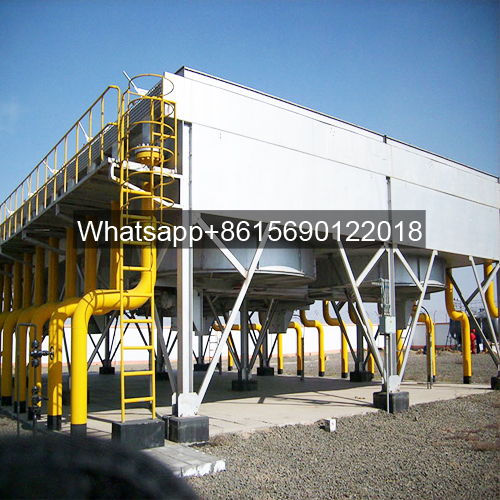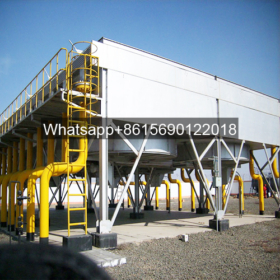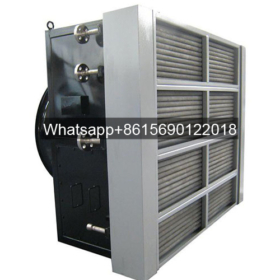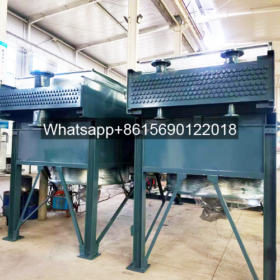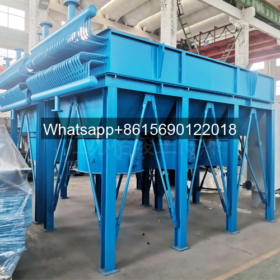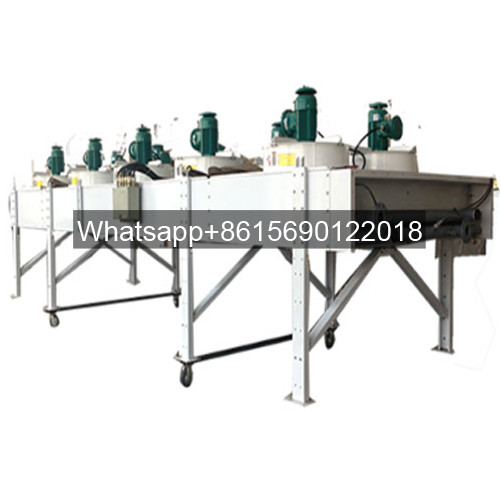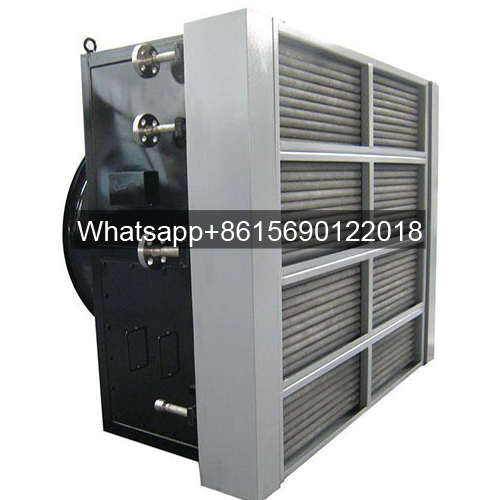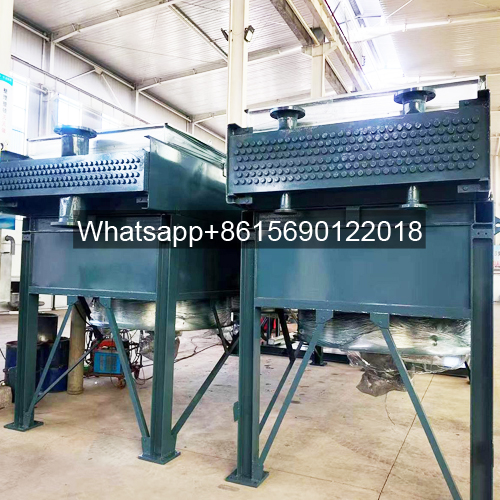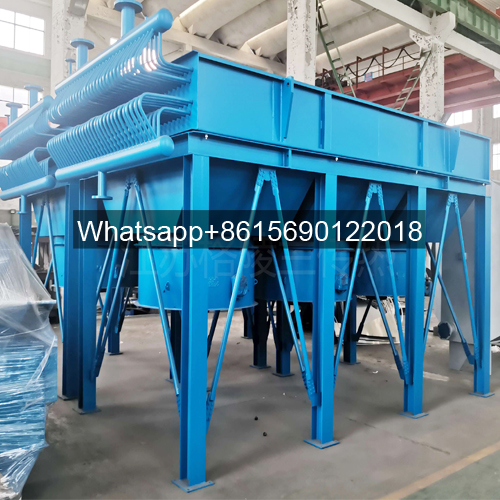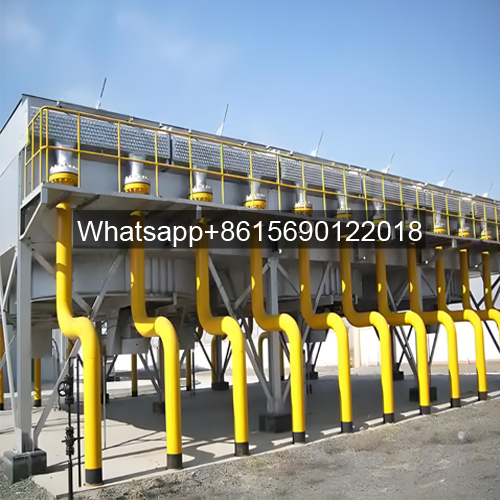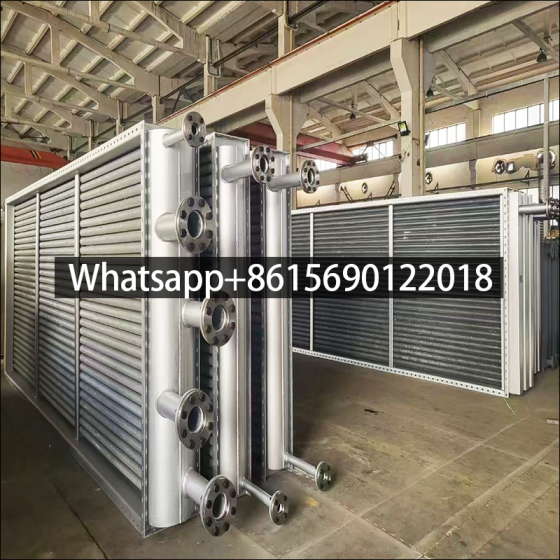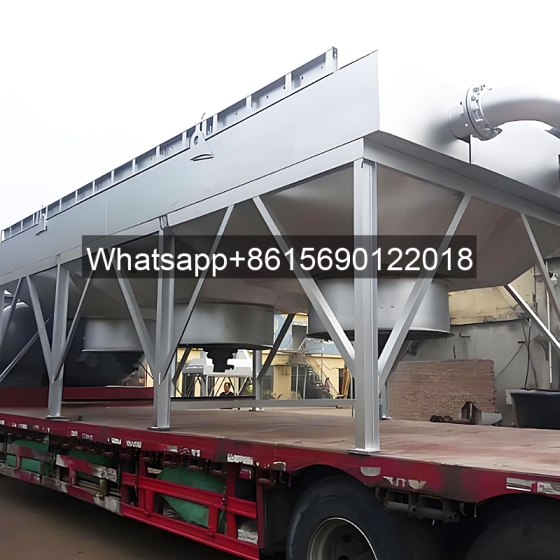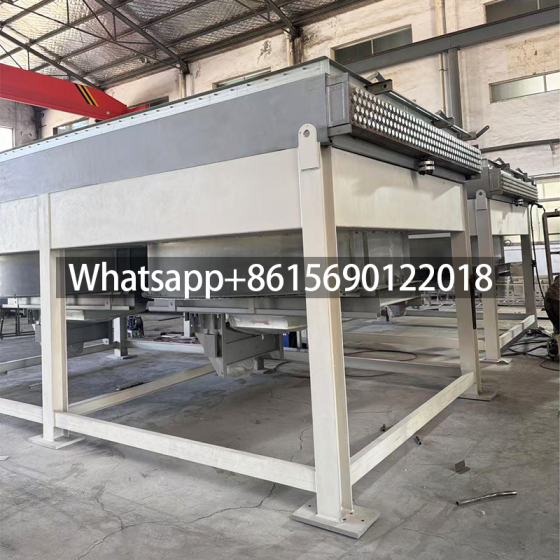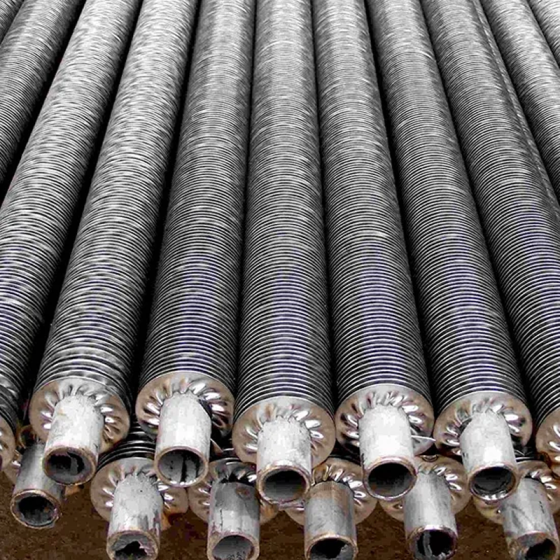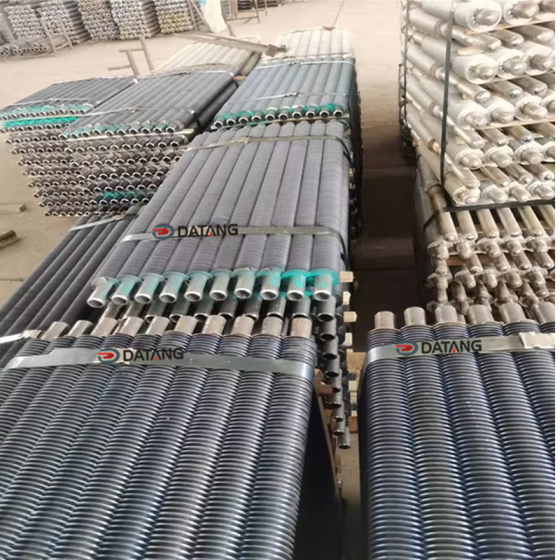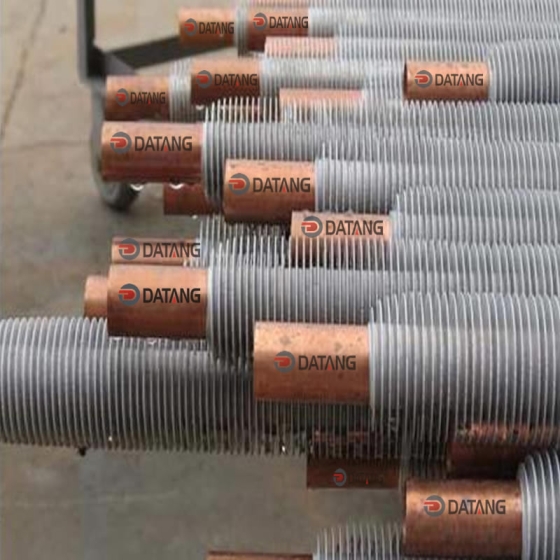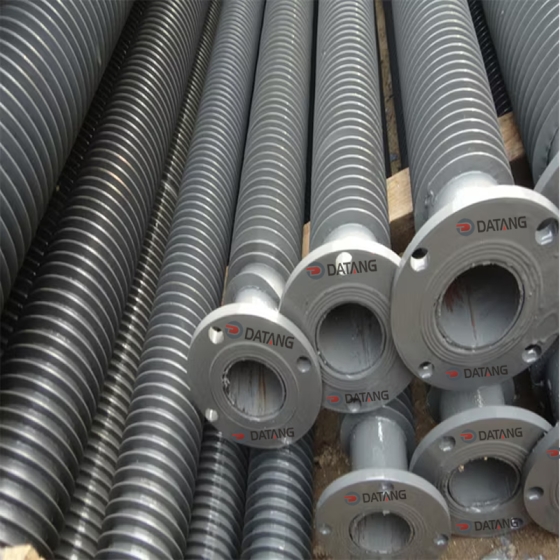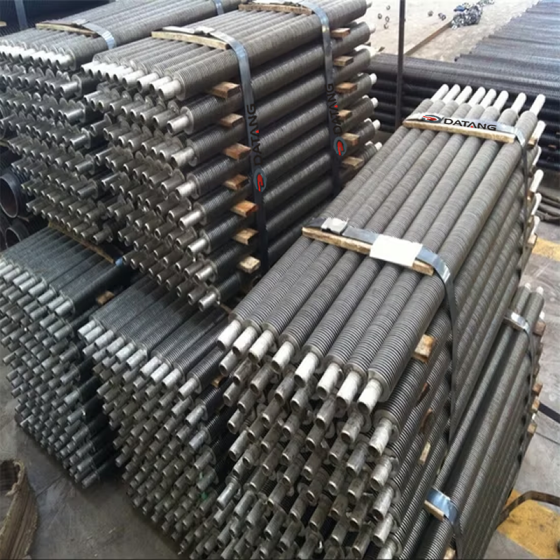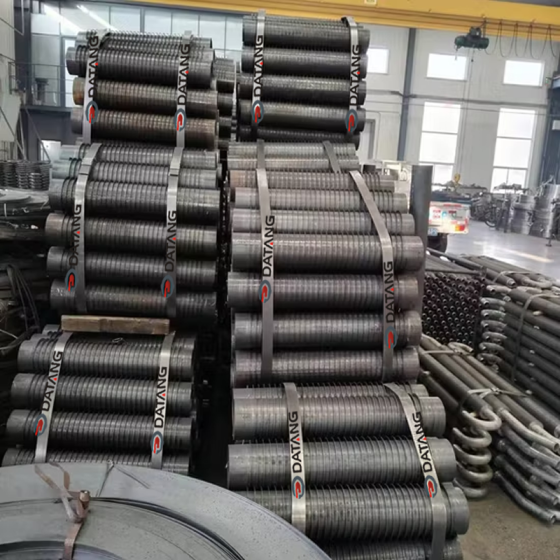In the oil refining industry, hydrocracking and hydrotreating units are key components for producing clean fuels. Fin Fan Air Cooled Finned Tube Heat Exchangers, as essential cooling equipment in these units, ensure safe, stable, and efficient operation with their unique advantages.
In the hydrocracking and hydrotreating processes, the reaction products are high-temperature, high-pressure oil and gas mixtures that require gradual cooling before subsequent separation and processing.
Fin Fan Air Cooled Finned Tube Heat Exchangers are typically used as aftercoolers to pre-cool the reaction products before water coolers. They are also widely used to cool process fluids such as circulating hydrogen and fractionator overhead products.
Application of Fin Fan Air Cooled Finned Tube Heat Exchangers in Hydrotreating Units
Fin Fan Air Cooled Finned Tube Heat Exchangers are primarily used in the following processes in hydrocracking/hydrorefining units:
Reaction Product Cooling: The high-temperature, high-pressure oil and gas produced by the hydrogenation reaction (typically exceeding 300°C) first enter an air cooler for preliminary cooling. For example, during the renovation of a diesel hydrotreating unit at an oil refinery, several air cooling devices, including a hot low-pressure air cooler (01-A-102A/B), were added.
Circulating Hydrogen Cooling: Circulating hydrogen in a hydrotreating unit must be cooled before reuse, and Fin Fan Air Cooled Finned Tube Heat Exchangers play a critical role in this process. Failure to effectively cool the circulating hydrogen compressor will increase the load and steam consumption.
Fracturing Tower Overhead Cooling: The light fractions at the top of the fractionating tower are cooled and condensed using Fin Fan Air Cooled Finned Tube Heat Exchangers. For example, a patent describes a Fin Fan Air Cooled Finned Tube Heat Exchanger for catalytic reforming, specifically designed for cooling light fractions from the overhead of a splitter column in a naphtha catalytic reforming system.
Technical Advantages of Fin Fan Air Cooled Finned Tube Heat Exchangers
Fin Fan Air Cooled Finned Tube Heat Exchangers offer significant advantages over traditional water coolers:
Energy Saving and Environmental Protection: Fin Fan Air Cooled Finned Tube Heat Exchangers primarily utilize air for cooling, eliminating the need for large amounts of cooling water, significantly reducing water consumption and the need for water treatment chemicals. Modified, high-efficiency Fin Fan Air Cooled Finned Tube Heat Exchangers can significantly reduce unit energy consumption. For example, after retrofitting the air cooler in a hydrocracking unit, the steam consumption of the circulating hydrogen compressor decreased by 0.5 tons/hour.
Low Maintenance Cost: Fin Fan Air Cooled Finned Tube Heat Exchangers have a relatively simple structure and do not require solutions for issues such as scaling and algae growth. Maintenance effort and costs are significantly lower than with water-cooled systems. Fin Fan Air Cooled Finned Tube Heat Exchangers, in particular, eliminate the need to worry about water outages or freezing, are easy to maintain, and offer low operating costs.
Safety and Reliability: Hydrogenation reaction effluent contains corrosive components such as H₂S, HCl, and NH₃. These react with water to form ammonium salts, causing equipment corrosion. Fin Fan Air Cooled Finned Tube Heat Exchangers utilize air cooling, reducing the possibility of condensation of corrosive substances and improving equipment safety.
Environmental Adaptability: Fin Fan Air Cooled Finned Tube Heat Exchangers are an almost irreplaceable cooling solution for areas with high water hardness or limited access to water.
Recent Advances in Fin Fan Air Cooled Finned Tube Heat Exchanger Technology
With the advancement of technology, Fin Fan Air Cooled Finned Tube Heat Exchanger technology is also continuously improving:
High-Efficiency Blade Design: The new generation HY series fiberglass blades feature a high lift coefficient and a high lift-to-drag ratio, significantly improving fan efficiency. After a petrochemical company’s renovation, the fan’s total pressure increased from 170 Pa to 200 Pa, and the air volume increased from 36 × 10⁴ m³/h to 46 × 10⁴ m³/h.
Transmission Improvement: The friction-driven multi-V belt drive was replaced with a meshing-driven synchronous belt drive, ensuring accurate transmission ratios and improving transmission efficiency.
Compound Fin Fan Air Cooled Finned Tube Heat Exchangers: These innovatively developed compound coolers combine the advantages of air cooling and evaporative cooling. The air-cooled tube bundle cools the process fluid to below 70°C, avoiding water scaling points and improving heat exchange efficiency and service life.
Corrosion-Resistant Materials: Targeting the harsh operating conditions of hydrogenation units, high-nickel alloy tube box electron beam welding technology and large-area strip electrode cladding technology for carbon steel air cooler tubesheets were developed to enhance the corrosion resistance and service life of the Fin Fan Air Cooled Finned Tube Heat Exchangers.
Fin Fan Air Cooled Finned Tube Heat Exchangers, as key equipment in hydrocracking and hydrotreating units, play an irreplaceable role in cooling reaction products, circulating hydrogen, and fractionator overhead products. Their energy-saving, environmentally friendly, low-maintenance, and safe and reliable features have made them highly sought after in the modern refining industry.
With the application of new technologies such as high-efficiency blades, novel drive systems, and composite cooling, the performance of Fin Fan Air Cooled Finned Tube Heat Exchangers will continue to improve, providing a more reliable guarantee for the long-term safe operation and energy conservation and consumption reduction of hydrotreating units. For refineries, selecting the right Fin Fan Air Cooled Finned Tube Heat Exchangers and implementing necessary technical upgrades are crucial for improving the economic efficiency and competitiveness of their units.
 dtfinnedtube.com
dtfinnedtube.com

